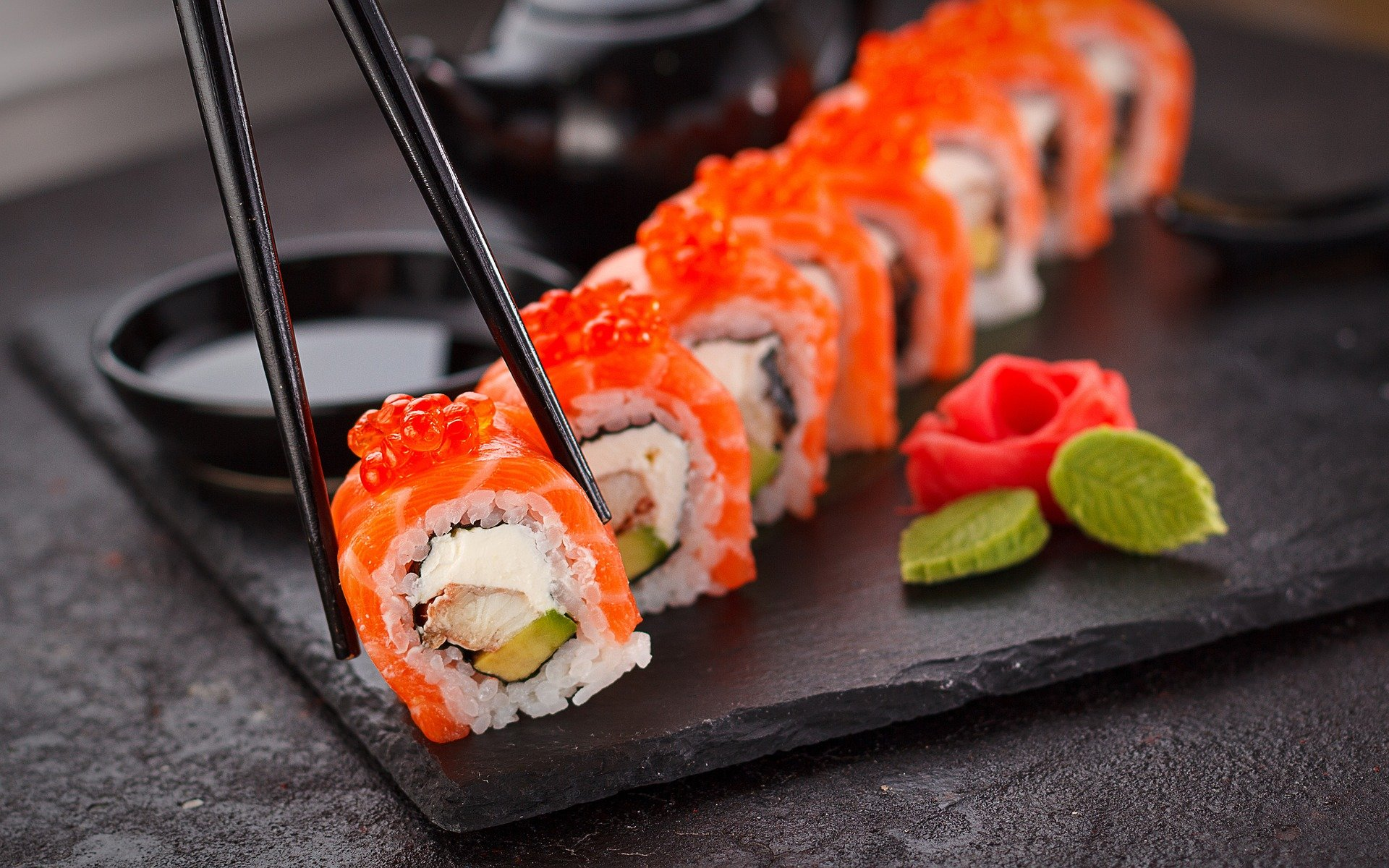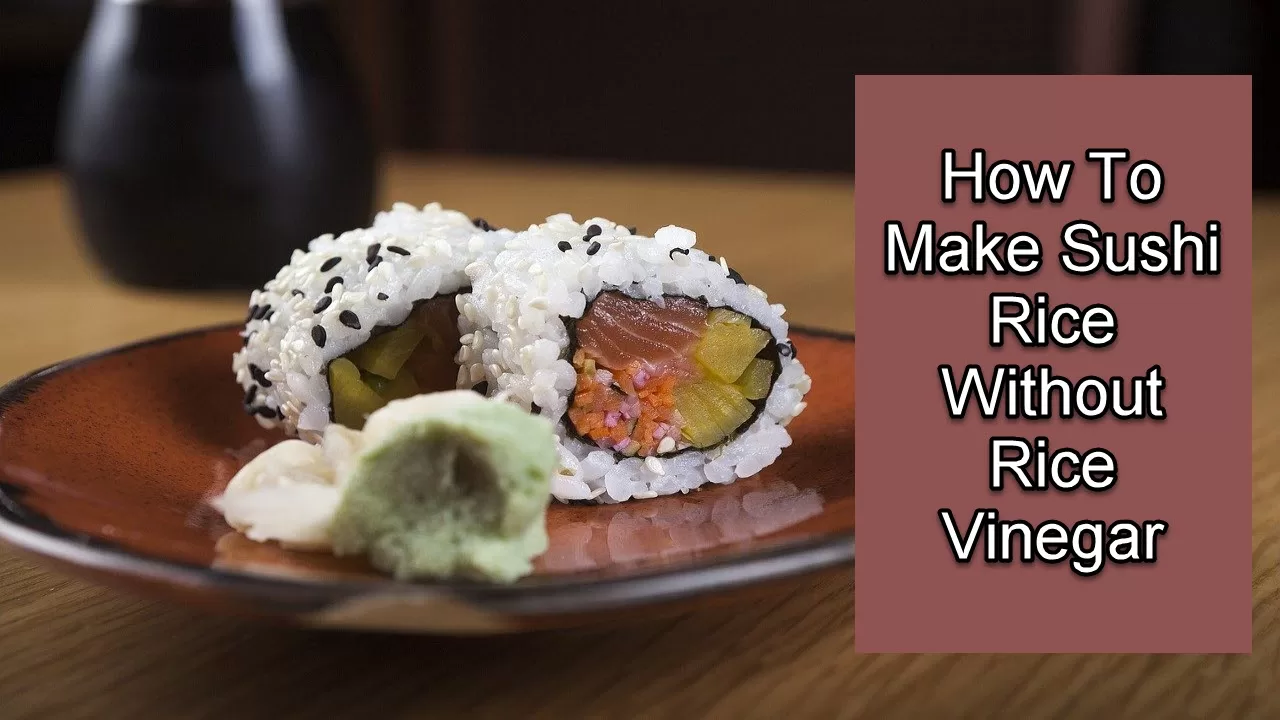
Sushi rice has been a staple dish and is already popular worldwide. This food originates from Japan made from Japanese-style white short-grain rice, which is considered as an essential for making good sushi rice as it has a uniquely sticky texture, plump and firm-textured variety of rice.
Aside from choosing the right variety of rice, sushi rice has also one important component that plays an important role in making a delicious product – and that is the rice vinegar. So the question is, can you make sushi rice without rice vinegar? If so, how to make a sushi rice with a missing essential component? Let’s find out.
How To Make Sushi Rice Without Rice Vinegar
Can We Make Sushi Rice Without the Rice Vinegar?
Vinegar is an essential ingredient in making good sushi rice, and it is not just a regular type of vinegar, it should be rice vinegar. Well, there’s a few reasons behind that. First, the word Sushi has been derived from Su-me-shi, which means vinegar rice, though the “me” word at the center has been omitted.
Vinegar also kills bacteria, which makes it very useful as sushi uses fresh ingredients, like fish, that could spoil easily. Using the right type of vinegar could provide you a great quality of sushi rice.
Technically, you can still produce sushi rice by using some alternative ingredients. However, it will lack all the Japanese flavors and delicious aromas of the traditional Japanese dish. Rice vinegar is used in sushi rice to provide those elements and omitting it as one of the main ingredients could affect the quality of the dish.
Rice vinegar is made from fermented rice and with a taste that is not as strong as regular wine vinegar. It’s a necessary ingredient in many Asian dishes like pickled vegetables, salad dressings and sushi due to its slightly sweet flavor.
Since sushi is defined by rice and how you season it, using rice vinegar is a crucial process. You can still make sushi without the rice vinegar, but you won’t get the satisfaction of those who are making sushi using the traditional method. This is the reason why rice vinegar is considered as the only sushi vinegar.
There are types of sushi that use other sauces aside from rice vinegar, like the Western types of sushi. They are usually stuffed with filling and various sauces, making it far from the authentic sushi rice.
One of the reasons why sushi rice needs rice wine vinegar is to improve the taste of the dish. Without vinegar, the rice of the sushi would taste just like regular rice.
On the other hand, using regular vinegar would not be a great fit as it only provides a sour flavor or vinegar flavor. Sushi rolls are all about the balance of flavors and the sharp and pungent taste of the regular vinegar won’t go well with other sushi ingredients.
Also, using a regular vinegar would impact the aroma of your sushi rice as they don’t go well in that aspect. Rice vinegar will not only compliment the rice, but it also goes well with ingredients such as soy sauce.
So, if you want to have that harmony and the perfect balance of flavors, then you should stick to using rice vinegar instead of some alternatives when making sushi rice. Its delicate and subtle flavor without too much sour taste will be the best rice sushi partner.
Alternatives to Rice Vinegar
If the time comes that you ran out of rice vinegar at your disposal, you can still use some alternatives to make a good sushi rice.
Regular wine vinegar is very different from rice vinegar, thus, it is discouraged to use it as an alternative. Due to its acidity and harsh taste, regular wine vinegar overpowers rice. We need the rice vinegar as it harmonizes and sinks in with the rice.
The difference in pH value between regular vinegar and the rice vinegar makes them unsuitable as alternatives for each other. Rice vinegar is mellow, sweet. It also has a lower ph value than regular wine vinegar.
Since regular vinegar has a strong taste, you can choose apple cider vinegar, white vinegar, balsamic vinegar or champagne vinegar. Though not as common as the other mentioned alternatives, white wine vinegar and fresh lemon juice can also be a good option.
Just boil some sugar, salt, and vegetable oil, then stir it into the cooked rice together with your preferred alternatives. Mix them well into the hot rice until it’s dry and use it for the rolls.
Here are some of the preferred substitutes if you don’t have rice vinegar:
Apple cider vinegar – bacterial growth should be prevented and that is one of the reasons why vinegar is important on sushi rice. Apple cider vinegar kills bacteria, making it a good substitute for rice wine vinegar. Apple cider vinegar has a unique flavor profile that would definitely change the rice’s taste.
White Vinegar – Just like the apple cider vinegar, white vinegar is effective against bacterial growth. It also has the same intense flavor as rice vinegar and adds a kick to sushi rice without the overpowering taste.
White Wine Vinegar – This is also an excellent alternative as it contains alcohol that can prevent bacterial and mold growth on the food. Others may also prefer using white wine over rice wine vinegar since it is very flavorful. Try out some new flavors on your sushi rice by using white wine vinegar.
Lemon Juice – ditch the vinegary taste of the regular wine vinegar by using some lemon juice. Its acidity creates a barrier against bacteria and it also provides a bold, unmistakable taste to your sushi rice. Freshly squeezed lemon juice from lemons or store-bought concentrated lemon juice are usable.
Champagne Vinegar – This alternative is on the top of the lists for some people. Champagne vinegar has a strong flavor and adds a unique twist on sushi rice. It also preserves the sushi’s form and gives the sushi rice a bit sweeter flavor. If you don’t want an overpowering alternative for rice vinegar, then give this option a try.
How to Make Sushi Rice with Missing Rice Vinegar
There are several substitutes that you can use if you don’t have rice vinegar to make sushi rice. Some sushi rice recipes use alternatives, especially to those regions where rice vinegar supply is scarce and limited.
First, make sure to choose the right rice vinegar substitute before you start cooking or making your sushi rice. We have to remember that each alternative changes the flavor. Using proper ratios will be the most important part of the process.
If you are trying some alternatives or looking for a new sushi recipe, here’s some steps on how you can make a good sushi rice without rice vinegar.
- In a pot, boil sugar, vinegar (alternative of your choice), and vegetable oil. It is important to separate your ingredients into two categories as it will make it easier to mix them. Stir these three ingredients continuously until they’re thoroughly blended.
- Cook the rice. You may use a rice cooker or do the traditional rice cooking by boiling water on the pot with a lid and putting the rice in. Make sure to place the lid properly to fully cook your rice grains. You may stir the rice occasionally to ensure proper cooking.
- Transfer the rice once it is cooked into a large bowl. Pour the boiled sugar, vinegar, and vegetable oil into the cooked rice and mix them together. You can use a glass bowl so that you can see if the mixture is sticking together.
- Continue mixing the boiled mixture and the cooked rice until the rice starts to change its consistency. Your goal is to achieve a dry and sticky texture. You can test it and it should stick together in chunks rather than fall apart into individual grains. You should also use a wooden spoon when mixing them as it prevents the flavor from tasting like metal or plastic.
- After mixing all of the ingredients thoroughly, lay it out into sheets. You can control the thickness depending on your preferences or the thickness that you want the rolls to be. To prevent lumps and misshapen on the rolls, spread the rice evenly across the whole sheet.
Tips to Avoid Mistakes in Making Sushi Rice
Sushi rice is a complicated dish to make. It is more complicated than typical meals, such as pasta, burgers, or salads. For this reason, there are several mistakes that most people encounter when making sushi rice.
One common problem or mistake that people make is boiling everything at the same time. This is wrong in all aspects as doing this procedure will ruin the ingredients. It is not recommended to boil everything together at the same time as some ingredients will take longer to be cooked while others cook easily.
Also, cooking rice too early before the other ingredients will make it cold, hard, and gross. It is preferable to prepare the mixture before cooking the rice. Don’t toss all ingredients together. Make sure to separate the liquid mixture before mixing it with the cooked grains.
Don’t guess when measuring the ingredients. Use proper measuring tools in preparing the needed ingredients before starting the cooking process. It will also help reduce the cooking time as they are already measured and ready to be used.
It takes time to cook sushi. Don’t rush the process as it takes time, care, and precision to make good quality sushi rice. Stir it long enough to change the texture of the rice and provide a strong flavor. But make sure you don’t mix it for too long as it will result in mushy rice.
To avoid these mistakes, make sure to familiarize yourself with the sushi rice recipe. If you are not sure with one substitute of rice vinegar, you can try all of them to get the perfect sushi rice for you.

